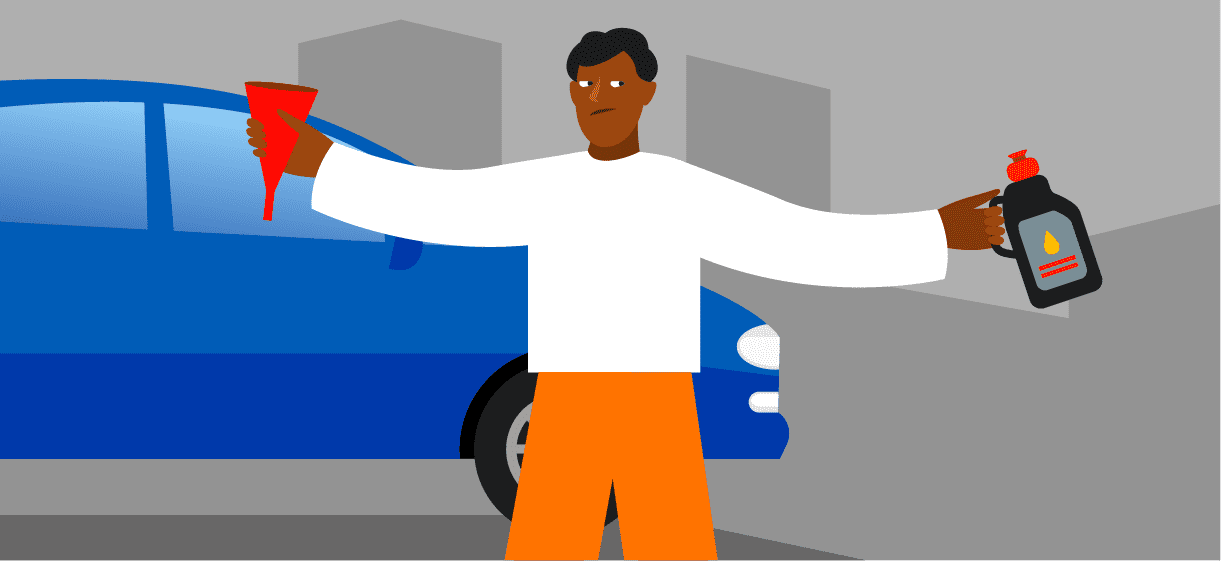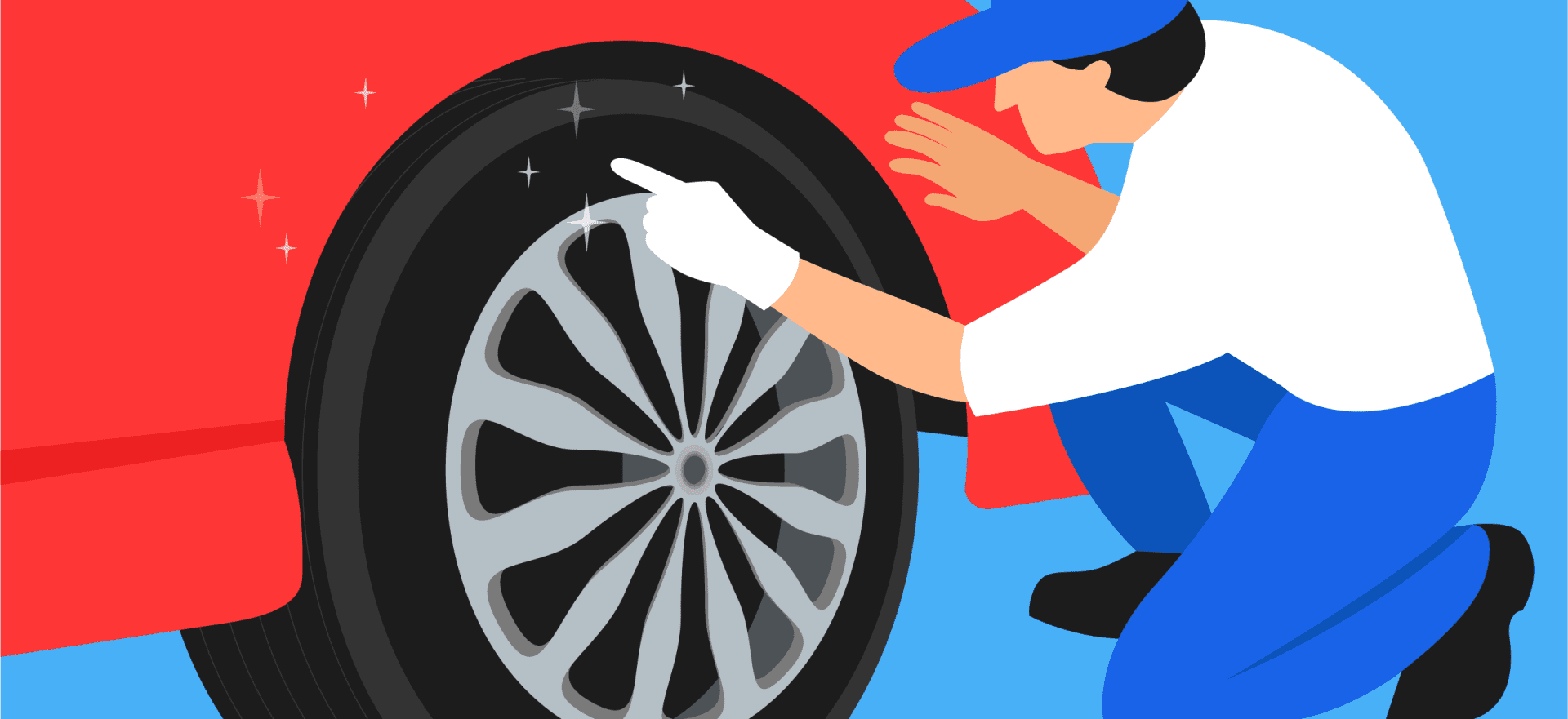Regular oil changes are an integral part of vehicle maintenance. Your car has several moving parts that require proper lubrication to function optimally. Otherwise, they could rub against each other, resulting in premature wear and tear.
Changing your oil isn’t cheap, but it still costs less than replacing or repairing a damaged engine. Plus, it’s a simple, effective way to maintain your car’s longevity and performance.
The Role of Engine Oil
Think of engine oil, or motor oil, as the lifeblood of your vehicle.
Most engine components, such as the crankshaft, pistons, and bearings, are made of metal. When metal rubs against metal, it heats up and expands.
This process can lead to uneven expansion and contraction, distorting the metal. Over time, it may cause engine damage or failure.
Motor oil acts as a barrier between various engine components, minimizing friction. Therefore, it can extend their lifespan and prevent potential breakdowns.
Now let’s take a quick look at the primary functions of engine oil:
- Lubricates the engine’s moving parts
- Carries away dirt, contaminants, and other impurities
- Prevents the engine from overheating
- Helps protect the emissions system
- Maintains engine fuel efficiency
- Reduces mechanical shock
- Can prevent rust and corrosion
- Fills the gap between the cylinder wall and piston rings
- May serve as a hydraulic fluid for variable valve timing systems
For example, motor oil contains detergents, dispersants, and other additives that keep a car’s engine clean.
Some of these compounds prevent impurities from adhering to the piston rings and other engine parts. Others dissolve the contaminants in used engine oil, preventing sludge formation.
These additives wear out over time, affecting oil quality. That’s why it’s essential to change the oil regularly, even if you don’t drive much.
Traffic school can help you keep a clean driving record, prevent insurance increases, and more!
How Often Should You Change Your Engine Oil?

Traditionally, car manufacturers recommended changing the oil every 3,000 miles or every three months—whichever came first.
However, the actual numbers depend on several factors, including:
- Vehicle age and mileage
- Type of engine
- Maintenance history
- Climate and weather conditions
- Quality and type of oil used
- Driving habits
- Oil filter quality
Based on these factors, the American Automobile Association (AAA) says it’s possible to go 3,000 to 15,000 miles between services.
For instance, older cars or those with high mileage may require more frequent oil changes due to potential wear. The same goes for those vehicles that don’t undergo regular maintenance for one reason or another.
How you operate your car matters, too. For example, frequent short trips— especially those on busy roadways—can cause the oil to wear out faster.
Therefore, city dwellers need to change the oil more often than someone living and driving in the countryside where there’s less traffic.
Also, note that aggressive driving increases oil consumption. The same happens when you constantly drive at high speeds. Other factors, such as towing a trailer, may cause the engine to work harder and use more oil.
Consider the Type of Oil Used
The 3,000-mile rule still applies to some vehicles, but this number tends to be higher for modern cars with more advanced engines.
Additionally, the lubricants available today are different from those used 10-20 years ago. Not only do they use high-quality additives, but they also have a higher viscosity and provide better protection for longer periods.
For example, some formulas contain antioxidants that prevent oil breakdown and thickening. As a result, they may increase the engine’s lifespan and ensure better performance.
Modern lubricants, such as full- and semi-synthetic oils, may also contain friction modifiers for improved fuel efficiency. Plus, they’re often more resistant to heat and have superior anti-friction properties compared to conventional oils.
According to Kindred Auto, full-synthetic oils can last 10,000 to 15,000 miles or more. Semi-synthetic oils have a shorter lifespan (around 5,000 miles) but still last longer than their predecessors.

It’s also worth mentioning that either type of oil is safe for older engines. So, even if you have a 20-year-old car, you may not need to change the oil every 3,000 miles.
This brings us to the next point…
Always Follow the Manufacturer’s Instructions
As the AAA notes, most car manufacturers recommend changing the oil every 5,000 to 7,500 miles. But again, this aspect depends on where and how you drive, the type of oil used, and other factors.
Stay on the safe side and follow the manufacturer’s guidelines, which can be found in the owner’s manual.
For example, Kia’s recommendations vary by country, usage conditions, and type of engine. Based on these factors, your car may require an oil change every 3,000 to 10,000 miles.
Kia also states that “severe” driving conditions, such as heavy traffic areas, rough roads, or freezing temperatures, will reduce the recommended oil change intervals by half.
If, say, you normally replace the oil every 10,000 miles, you may need to do it every 5,000 miles after moving to a high-traffic area.
Also, note that vehicle manufacturers may recommend specific brands or types of oil.
For instance, some Toyota cars require 0W-20 synthetic oil. Failure to meet these guidelines can damage the engine over time and affect your car’s performance.
The only exceptions are electric cars, which don’t require oil changes. However, you still need to regularly check and add windshield washing fluid, brake fluid, and coolant.

Signs Your Car Needs an Oil Change
Some cars, especially newer models, come with built-in service reminders. These devices monitor the number of miles traveled, as well as the driving conditions, and then display the optimal oil change intervals.
If your vehicle doesn’t have this feature, use a dipstick to check the oil level once a month or so. Do it when the engine is cool to make sure you get an accurate measurement.
Most dipsticks have minimum and maximum indicators (e.g., MIN/MAX or HIGH/LOW) or two marks at the bottom. When you pull the dipstick out, the oil level should be between MIN and MAX. If it’s below the lower mark, then it’s time for an oil change.
Note, though—topping up your oil isn’t the best course of action unless the level is very low. If that’s the case, fill up the tank with new oil and go to an auto repair shop as soon as you can.
Apart from that, there are some telltale signs you should change the oil. These may include:
- The engine is making odd noises, such as grinding, knocking, or ticking
- You notice a burning smell inside the vehicle
- You have a hard time starting the car
- The exhaust smoke is darker than usual
- The engine oil is thick and dark or has a burning smell
- The oil change light is on (if your car has this feature)
- The oil level is dropping rapidly
- Your car consumes more fuel than normal
- The engine is overheating, stalling, or seizing
First, check the oil on the dipstick.

Fresh, clean oil will be a transparent yellowish or light brown color and have the consistency of olive oil. If it’s dark brown, black, gritty, or very thick, then you should have it replaced.
In some cases, low oil levels may cause the check engine light or other dashboard warning lights to illuminate. If that happens, it’s best to stop the car and call a mechanic immediately.
You may also hear unusual noises coming from the engine. These sounds are often due to the increased friction between its moving parts and should go away after an oil change. If they persist, you might be dealing with a more serious problem.
What Happens If You Ignore These Signs?
The issues listed above may indicate low oil levels or other problems with the engine. Ignoring them will only make things worse.
Over time, you may notice a decrease in fuel efficiency, which can take a toll on your pocket. There’s also a risk of piston seizures, bearing failures, and other problems that require costly repairs. In the worst-case scenario, the engine will overheat and eventually shut down.
For reference, you can expect to pay $4,000 to $10,000 or more to have the engine replaced. By comparison, an oil change costs only $20 to $150.
Failure to change the oil on time may affect your ability to accelerate or shift gears, increasing the risks you face on the road. For newer cars, it may void the warranty.
How to Maintain Your Car’s Engine Oil
Unless there’s a leak outside the car, you shouldn’t lose much oil between changes. However, the oil will deteriorate in quality over time and should be replaced rather than topped up.
That said, follow these practices to keep your engine oil in good condition:
- Use a premium oil: High-quality oils, especially synthetics, tend to last longer than conventional motor oil. Ideally, use one with a lower viscosity in the winter and a thicker one in the summer.
- Buy an oil cooler: This device dissipates excess heat from the engine oil, keeping it at an optimal temperature. As a result, it helps maintain its viscosity, which can improve engine performance.
- Choose a quality filter: Premium oil filters are more effective at trapping dirt, debris, and other contaminants. Replace the filter every time you change the oil.
- Keep the engine clean: Regularly check your car’s engine for oil leaks, dirt buildup, and rust. Clean it every few months to prevent debris and other impurities from contaminating the oil.
- Check the oil level: Make a habit of checking the oil level at least once a month. If it’s consistently low, then your car may have a leak.
- Warm up the engine: Allow the engine to warm up before driving in cold weather. Not only will this practice reduce wear and tear, but it also allows the oil to flow more easily and lubricate all those moving parts.
- Add just the right amount of oil: Overfilling the crankcase with oil can damage the spark plugs and cause the engine to overheat. The oil level shouldn’t go past MAX on the dipstick.
- Use an engine oil cleaner: If you prefer to change the oil yourself, use an engine oil cleaner beforehand. This product contains additives that break down dirt and sludge deposits, leaving the engine clean. At the same time, it prevents the contamination of fresh oil.
As a final word, remember to visually inspect your engine oil every few weeks. Look out for any changes in color, texture, smell, or viscosity, such as a milky appearance or burnt odor.

Premium Motor Oils, Filters, and Additives for a Healthy Engine
Engine oil, filters, and other related products vary in quality from one brand to another. The highest-quality ones may cost more, but they could save you thousands of dollars in repairs.
While you don’t necessarily have to buy full synthetic oils, it’s important to choose a premium brand. The average motor oil may not protect your engine in extreme weather, during frequent, short trips, or when you use your car to carry heavy loads.
With that in mind, here are three products we recommend for a healthy engine:
1. Mobil 1 Advanced Full Synthetic Motor Oil
Why We Love It: This full-synthetic oil will last up to 10,000 miles between services and can withstand temperatures of -30 to 500 degrees Fahrenheit. What makes it stand out is its Triple Action formula, which helps clean and protect the engine while maintaining its performance.
Mobil 1’s Advanced Full Synthetic Motor Oil is also surprisingly affordable and works for both petrol and diesel engines. Plus, it contains additives that prevent and reduce sludge buildup, which may help increase your engine’s lifespan.
2. FRAM Extra Guard Oil Filter
Why We Love It: FRAM’s Extra Guard is compatible with any type of oil and can last up to 10,000 miles. It’s easy to install and remove due to its anti-slip texture, which makes it ideal for DIY oil changes.
We are also impressed with its ability to capture up to 95% of impurities., keeping the motor oil clean for longer. On top of that, it offers superior protection for the engine and has a sturdy design that prevents oil leakage.
3. RANSOTO Engine Oil Cooler
Why We Love It: Made of aluminum alloy, RANSOTO’s Engine Oil Cooler is built to last. Not only does it prevent oil leaks, but it can also withstand high temperatures. Plus, it’s quick and easy to install.
This component can be particularly useful for cars with diesel engines. Once installed, it removes excess heat from the motor oil, maintaining the engine’s operating temperature within a safe range.



































































































